

Tom kha gai, a Thai chicken soup with coconut and galangal, has gained a spot on nearly every Thai restaurant menu in the West, and I often ask myselfâ¦why? The most obvious answer is simple: People like creaminess, as well as sour and salty flavors. Pair those elements with chicken and the almost medicinal flavor of galangal and you have a perfect example of comfort food, a soup that warms your soul and body. However, in my experience, the soup often fails to fulfill its potential. Many renditions contain too much coconut cream, making it feel like Iâm sipping a warm smoothie, and they frequently don’t have enough of that essential galangal flavor. The galangal isn’t negotiable: after all, the soup is called tom kha, which translates to “boiled galangal.”
As I thought about ways to boost the galangal flavor in the soup, I thought of how ginger is sometimes prepared in many Chinese dishes: It’s pounded or blended with water before being strained to make ginger water. (Since I’m referring to ginger, I should say this here: please do not let me catch you making this soup with ginger. It’s not a substitute for galangal.) I tested this method with galangal by pounding it in a mortar and pestle and then pouring warm chicken stock over the paste to let it infuse. After about 20 minutes, I was left with a concentrated galangal stock that tasted peppery and medicinal; exactly what I want in a tom kha.Â
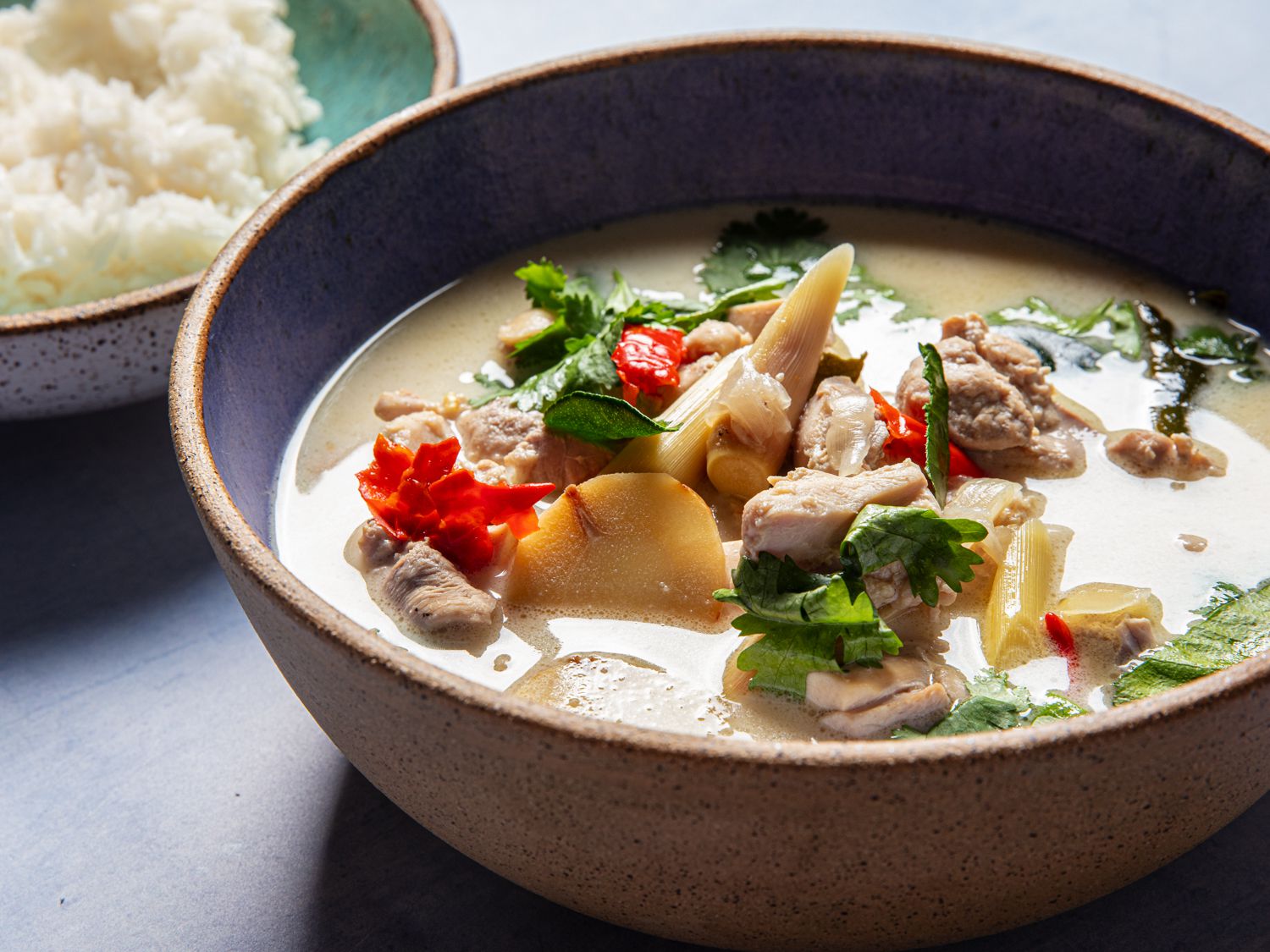
Having answered the question of boosting the galangal flavor, I next had to prevent the soup from becoming a coconut smoothie. The solution is simple, cutting the coconut cream with something else to lighten the broth. While some will reach for water here, I choose to build a more deeply chicken-y soup by using a rich chicken stock that’s seasoned with fish sauce and packed with aromatics like lemongrass and shallots. The addition of shallots provides undertones of sweetness that echo the later addition of coconut milk without adding extra sugar.
Once the chicken is cooked through, I add the coconut cream, fresh chiles, and makrut lime leaves to the pot. By adding these ingredients at the very end, the delicate flavor of the coconut cream is preserved and the bright and fresh flavors of those finishing aromatics are left intact.
Finally, I season the soup with equal parts fish sauce for saltiness and umami and lime juice for sourness. To make a full meal out of this, I recommend serving the tom kha gai with jasmine rice, green papaya salad, and makheua yao pad tao jiao (stir-fried eggplant).Â
For the Galangal Stock: In a granite mortar and pestle, add galangal and pound until a coarse paste forms, about 30 seconds. Set aside.
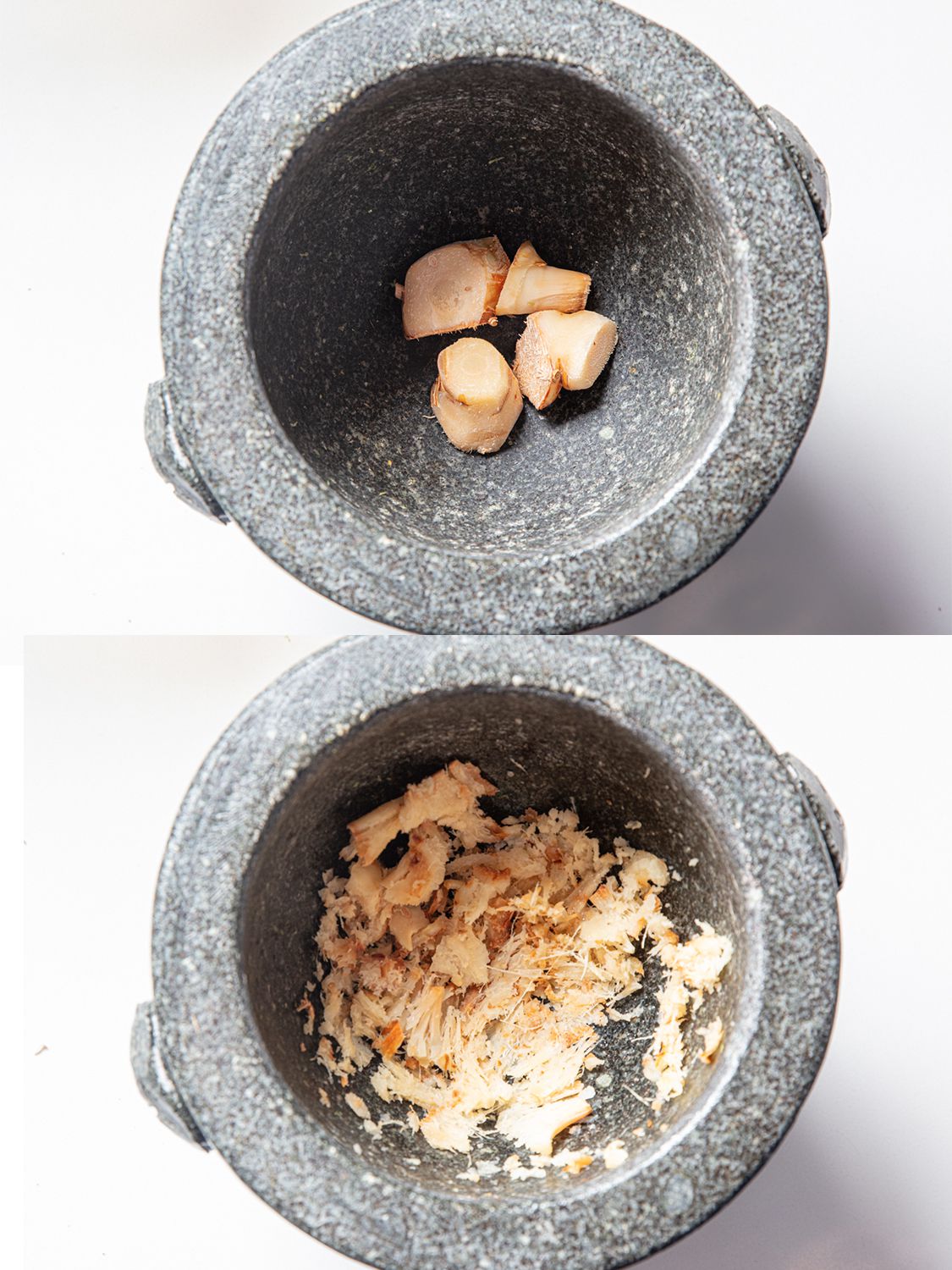
In a 2-quart saucepan, bring chicken stock to a simmer over medium heat, then remove from heat. Pour one-third of the warmed chicken stock over galangal in mortar, then with the pestle, press on galangal to extract its flavor into the stock, about 1 minute. Repeat process with remaining chicken stock, pressing on galangal each time to continue to express its flavor, then set aside to let the galangal infuse the stock.Â
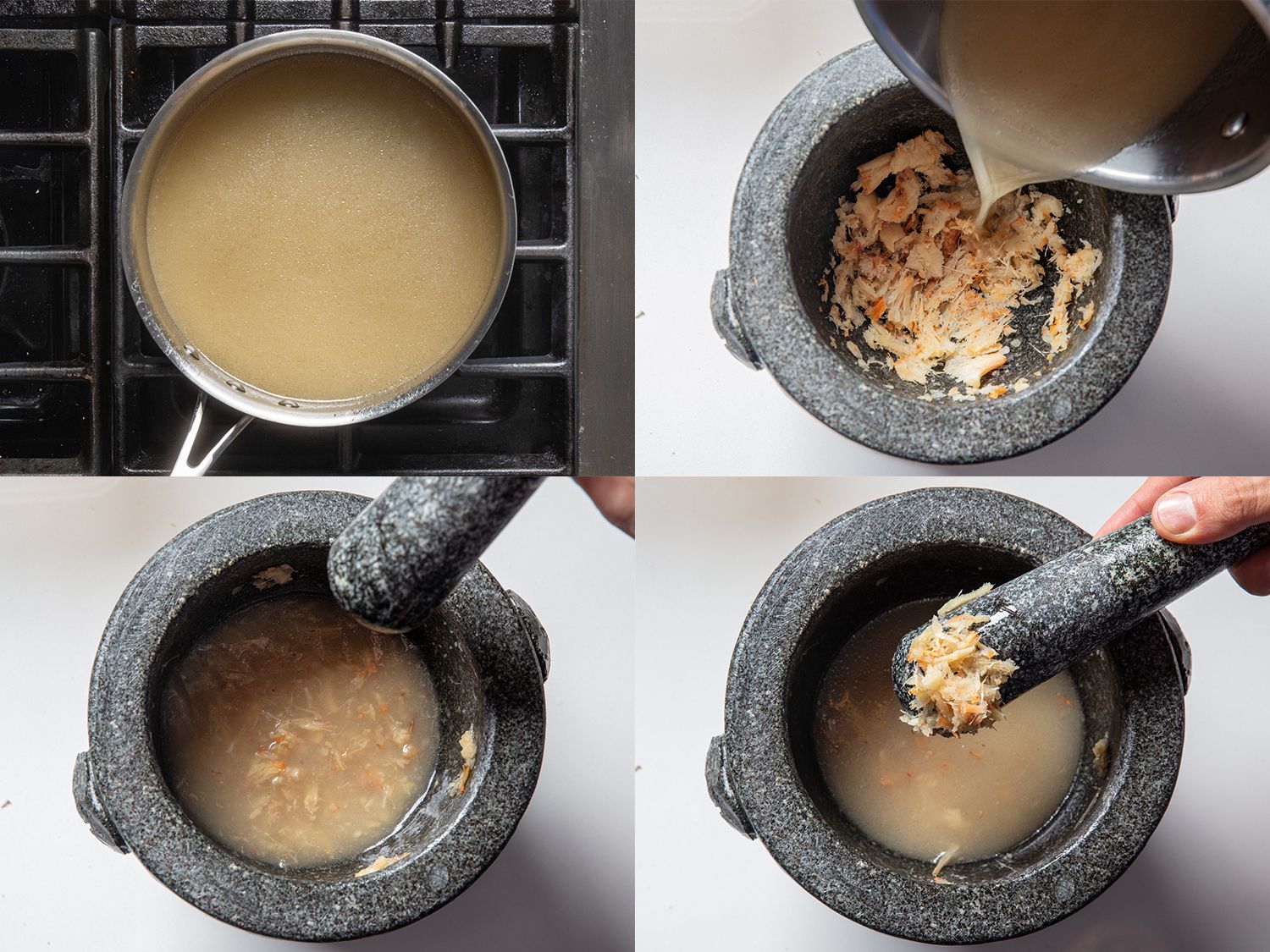
For the Soup: Meanwhile, in the now-empty saucepan, add chicken stock, galangal, lemongrass, shallots, and 1 tablespoon fish sauce, and bring to a boil over high heat. Add chicken, return to a boil, then lower heat to maintain a simmer. Cover and cook until chicken is tender and cooked through, about 20 minutes.Â
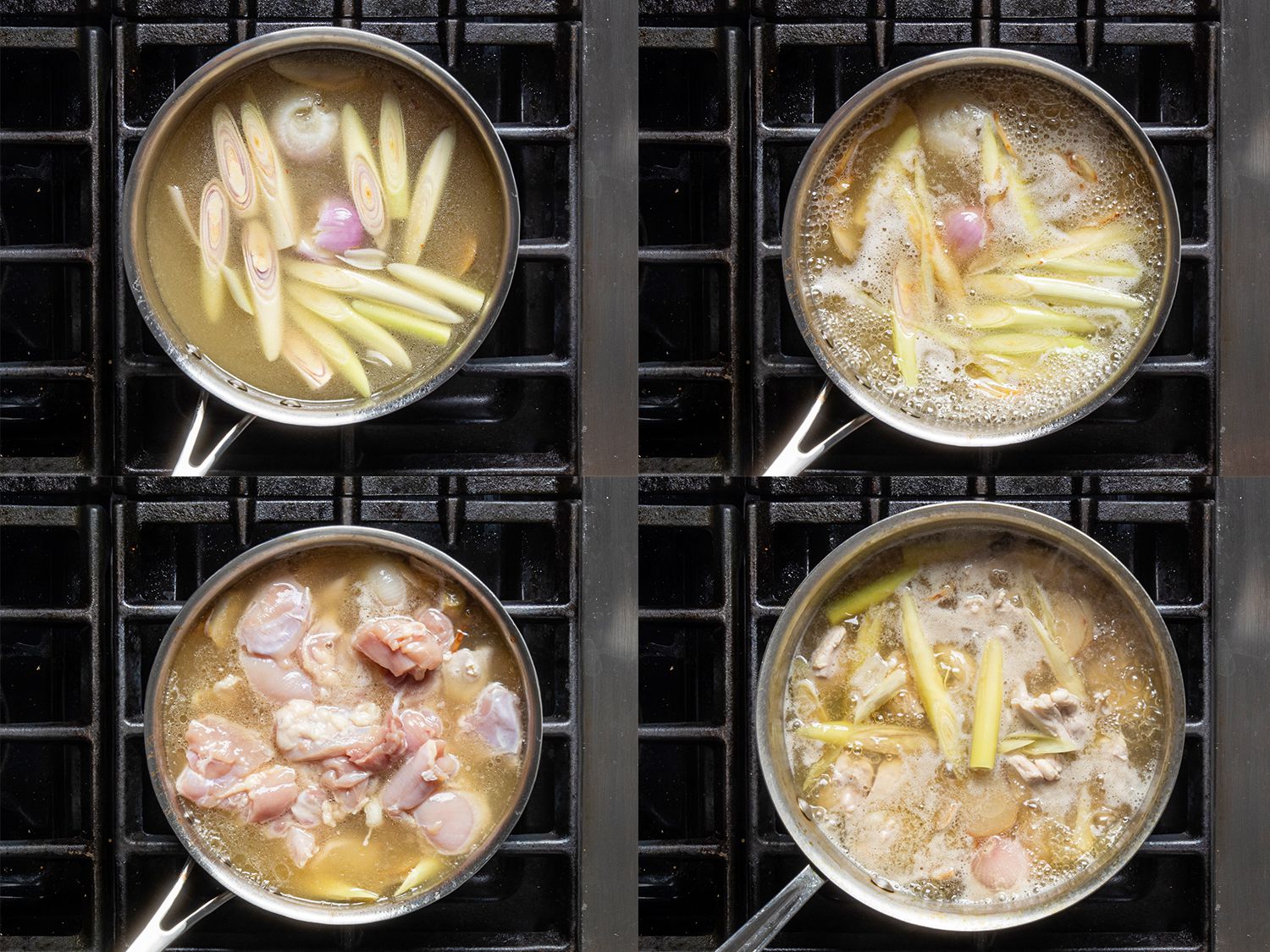
Pour galangal stock through a fine-mesh strainer into saucepan, pressing on solids to extract as much liquid as possible before discarding the fiber. Stir in makrut lime leaves, fresh chiles, and coconut cream then remove from heat. Stir in lime juice and remaining fish sauce.

To serve, divide between warmed soup bowls and garnish with cilantro.
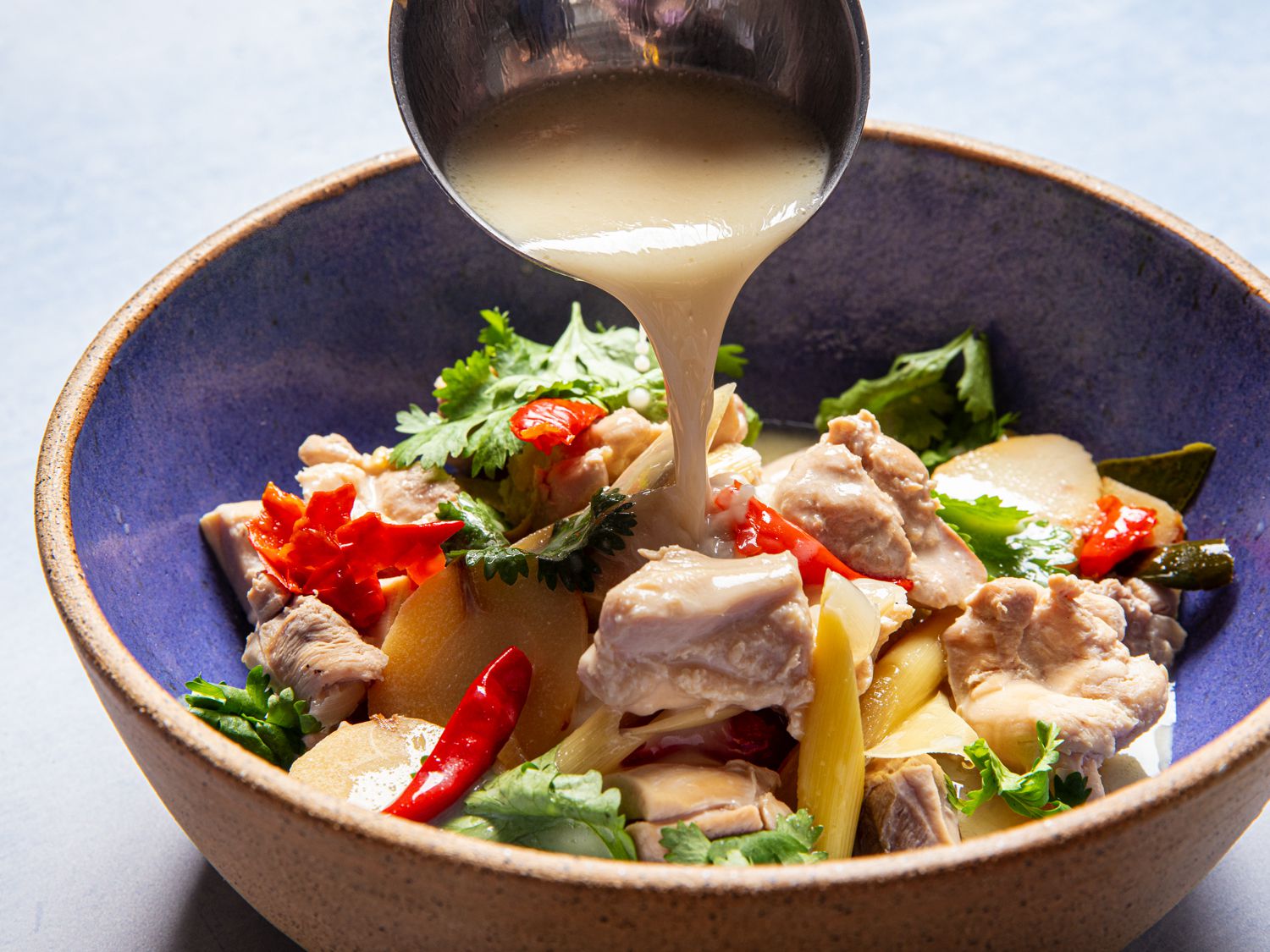
Special Equipment
Granite mortar and pestle, 2-quart saucepan
Notes
I prefer using homemade chicken stock made with only chicken and no aromatics. To do so, you can follow this recipe, making it with just chicken and water and no aromatics. If youâre using store-bought stock, look for one that is unsalted and includes minimal aromatics.
Coconut cream has higher fat content than coconut milk. If using boxed or canned coconut cream, make sure to stir the cream well before using since it will likely have a separate fat layer on top. If you cannot find coconut cream, coconut milk will work, the soup will just be a little less rich.
Make-Ahead and Storage
This dish is best served right away to preserve the freshness and sharpness of the ingredients. If you want to serve it the next day, you can reheat it in the microwave or on the stovetop, adding freshly squeezed lime juice as needed to brighten the flavor.Â










